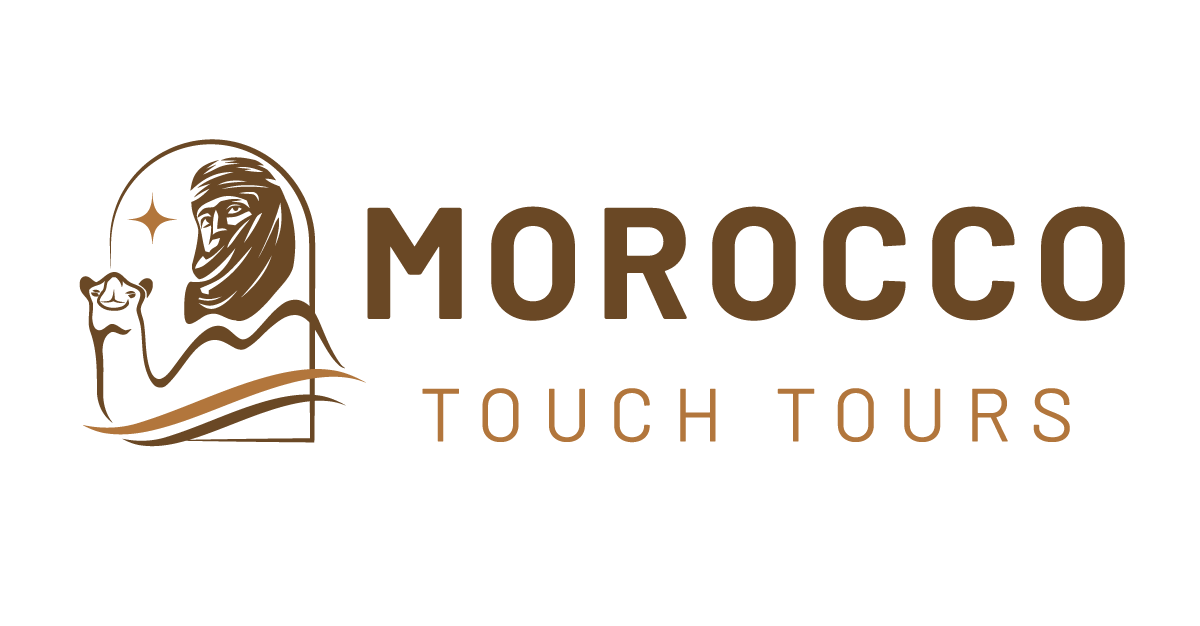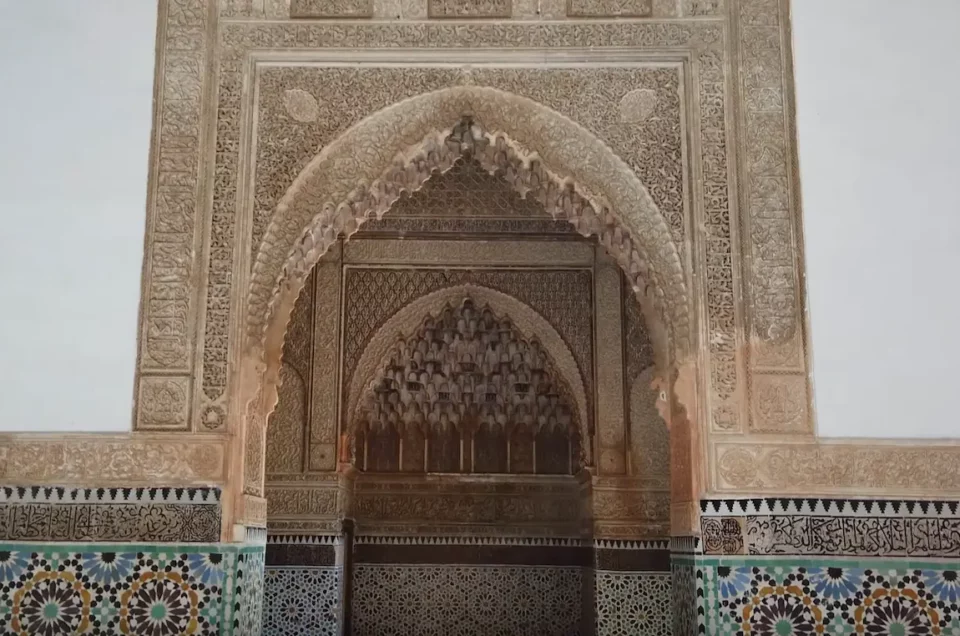The Saadian Tombs in Marrakech are a treasure trove of Moroccan history, dating back to the era of the Saadian Dynasty that ruled from 1511 to 1659. Located in the Kasbah district, these tombs are a testament to the grandeur and intricacy of Arabo-Andalusian architecture. This guide aims to offer an in-depth look into the history, architecture, and significance of the Saadian Tombs, providing valuable tips for tourists to make the most of their visit.
A Glimpse into the Past: The Saadian Dynasty
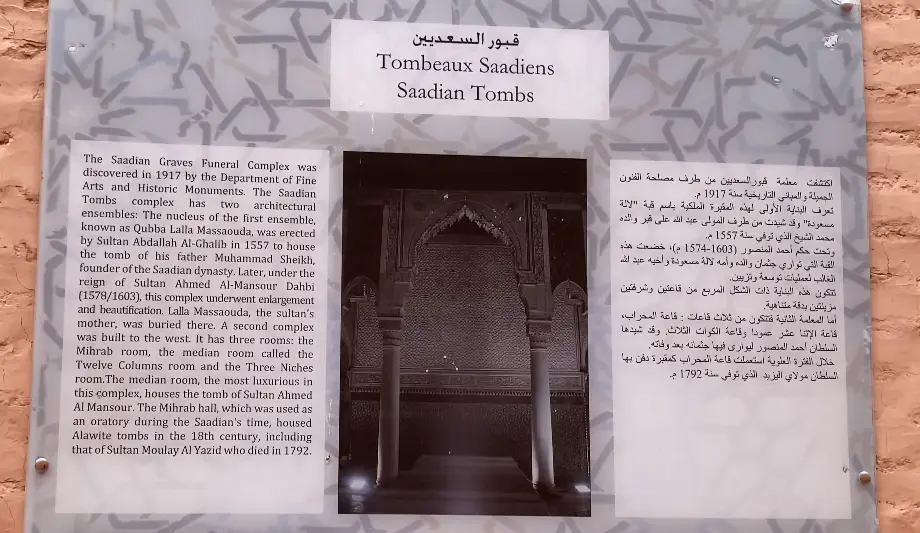
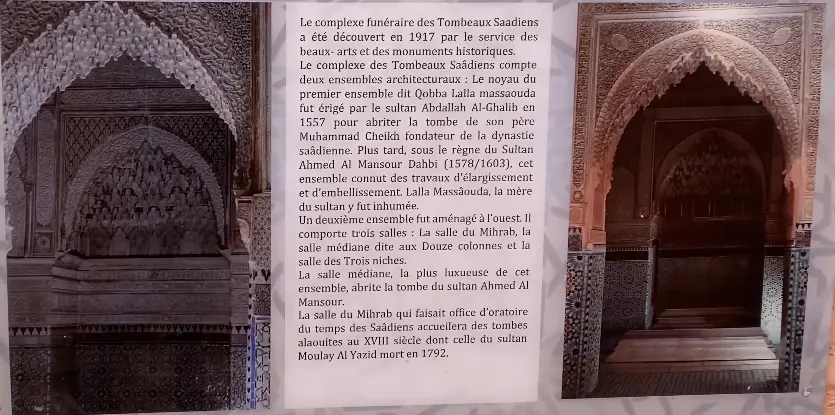
Origin and Rise to Power
The Saadian Dynasty originated from Arabia and established its rule in Morocco in 1511. They gained popularity through their military victories against the Portuguese, who had occupied parts of Morocco for about 60 years. The Saadian rulers were known for their strategic acumen and architectural contributions, which have left a lasting impact on Moroccan culture.
The Golden Era
Ahmed Al Mansour, the sixth Saadian Sultan, ushered in a golden era for Morocco. His reign was marked by prosperity, owing to the gold trade from Sudan and the ransom paid by Portugal for prisoners. This period saw the construction of magnificent buildings like the Badia Palace and the expansion of Marrakech as a commercial and diplomatic hub.
The Saadian Tombs: An Architectural Marvel
The Mausoleums
The Saadian Tombs consist of two main mausoleums that house the remains of Saadian rulers and their family members. The central mausoleum, known as the Room of the 12 Columns, is where Sultan Ahmed El Mansour is buried. The room is adorned with Carrara marble columns, intricately carved plaster, and enameled zelliges.
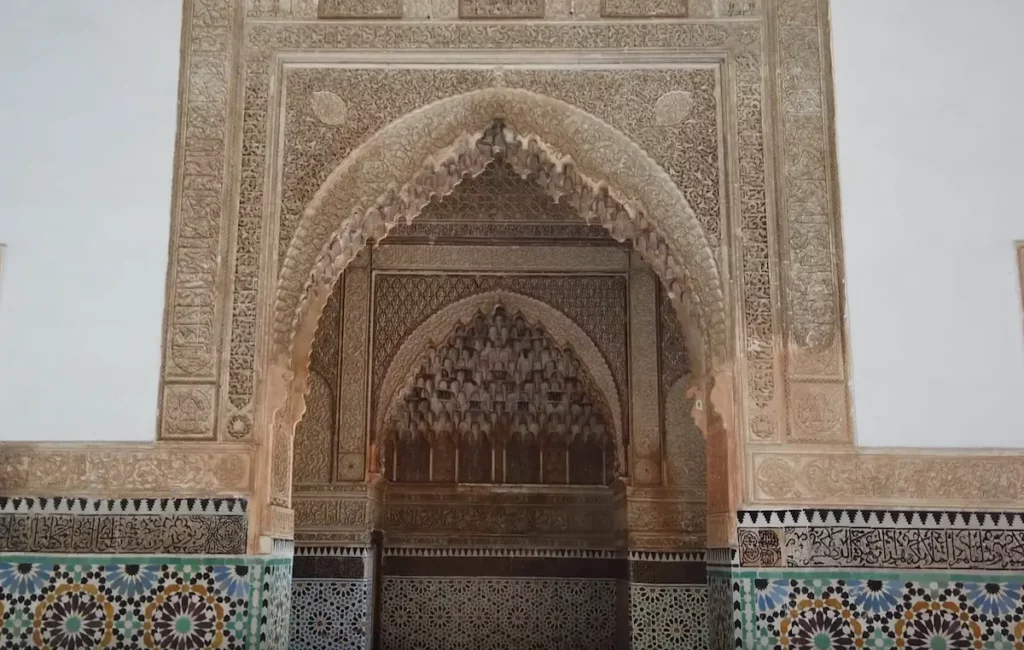
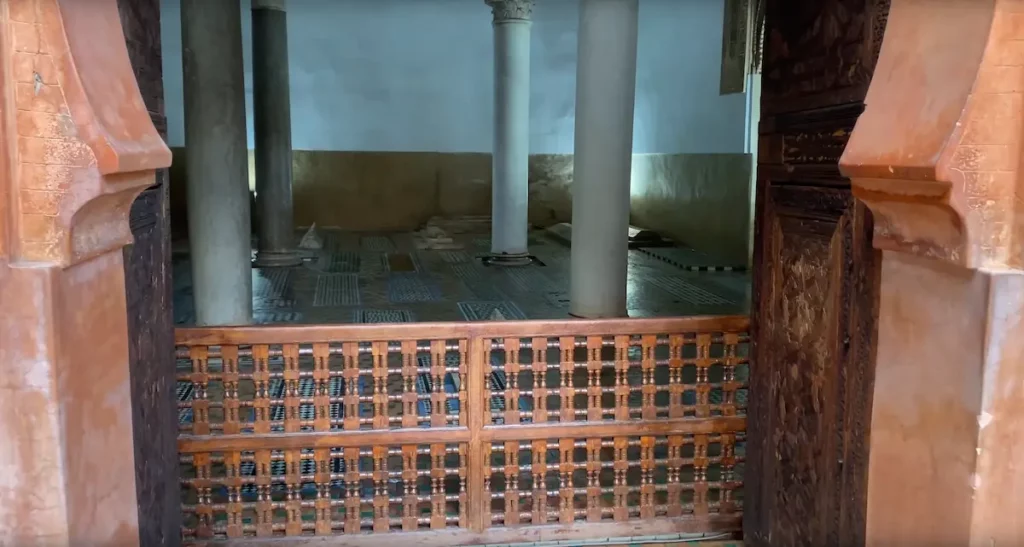
The Funeral Garden
Apart from the royal family, the tombs also include graves of servants and soldiers. These are located in the funeral garden of the site, which is adorned with Carrara marble stones and Fes zelliges.
Tips for Tourists: Making the Most of Your Visit
Best Time to Visit
The Saadian Tombs are open every day from 9 am to 4:30 pm. The adult ticket price is 70 dirhams per person.

Accessibility
Originally, the tombs were accessible only through a nearby mosque. However, a door has been added to allow non-Muslim visitors to explore the site.

Nearby Attractions
While you’re in the Kasbah district, consider visiting the Kasbah Mosque and the Bab Agnaou, both of which are in close proximity to the Saadian Tombs.
The Legacy and Preservation
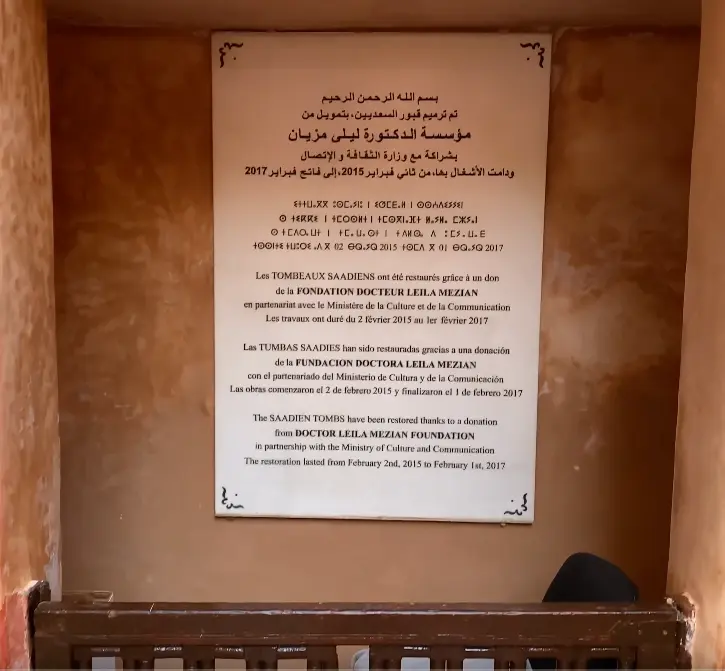
The Saadian Tombs were rediscovered in 1917 during the French protectorate and have since been restored and protected. They stand as a timeless testament to a rich era in Moroccan history, offering a unique glimpse into the lives and achievements of the Saadian Dynasty.
The Saadian Tombs in Marrakech are more than just a tourist attraction; they are a window into the rich history and cultural heritage of Morocco. Whether you’re a history buff or simply looking to explore the architectural wonders of Marrakech, the Saadian Tombs offer an enriching experience that should not be missed.
